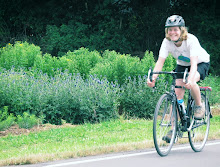When Sunita puts me in the hired car that is to take me to my next stop, Navadarshanam, I’m still in the food-politics doldrums of the GREEN Foundation conference. Adding to my frustrations was the fact that the panel on “Women and Access to Markets”, during which was Vanastree’s presentation, had been cut short due to other panels (which didn’t address gender issues) taking up more than their allotted time, and then the next speaker (another man) droned on for twenty minutes longer than he should have. At home, I wouldn’t put much emotional stock in such things, but in this country, where women are only beginning to get a toehold in any sort of public sphere, it was an affront, especially since their role in preserving traditional farming practices is huge. Because women normally take on the responsibility of feeding families, it is they who preserve the most nutritious and high-yielding varieties of crops, and they who are hit first when food is short.
Anyway, the two-hour car ride to Navadarshanam, most of it through the city, ends up leaving me little time to regain my composure, chock-full as it is of things to gape at. Roads and overpasses are being built an astonishing rate to keep up with the population growth, and old buildings are bought up, knocked down and replaced with asphalt in a matter of weeks. There’s more traffic than I could have imagined, and it’s still a holiday. I see corporate buildings with inexplicable architecture (on the way back a couple of days later, we were unable to decide whether one was supposed to be a spaceship or an ocean liner) across the street from slums. People swarm everywhere, some tapping at the window with open mouths and crying babies.
Finally, we reach the outskirts and drive through some agricultural land. Soon we cross over into Tamil Nadu (the next state), and drive though a couple of small villages with slightly happier-looking kids running around skinny and barefoot. Old men sit on stoops and watch the car go by.
Still, arriving at Navadarshanam is like landing on a different planet. We go through a gate, park, and the driver drops my bag by one of the three buildings there. Surrounded as we are by huge trees, I can’t see much beyond that, but there are colorful murals on the walls and all seems clean and orderly. Presently, a woman comes up the path and directs me toward another building, where my workshop is beginning. I’m here to spend three days learning how to cook “the Navadarshanam way”. Not sure what the “way” is but the cooking part had sounded like fun, so I signed up.
At the workshop session, which I slip into a few minutes late, all the fifteen or so participants are introduce themselves in turn. Most are housewives from Bangalore, but a couple brought their husbands and then there are some others who, like me, just happened upon the place. After the intros, Ananthu, the founding trustee, talks a little about what Navadarshanam actually is.
Eighteen years ago, Ananthu and a few friends decided to leave civilization for a place of their own where they could pursue a sustainable livelihood and apply their spiritual philosophies more actively to their lives. Basically, ND operates as a trust in which all the half-dozen or so trustees share resources (from tools to food) and live harmoniously on the same land – 115 acres of it, most of which has been left as wild land.
Well, ok, says my Bangalore-hardened brain when Ananthu wraps up. That all sounds well and good, but we all know communism doesn’t work on a large scale, so what are they trying to prove? And what are they doing to help the villagers just outside their gates? With all this land, shouldn’t they be exporting food? What good are all these trees to anybody? Who cares about spiritual ideals when there are hungry people?
I don’t push for answers at that time. I haven’t yet lost all patience, and I do have three days to interrogate, so I eat my dinner quietly and allow myself to be calmed slightly by evening prayers – chanted beautifully over a chorus of frogs and cicadas.
That night, before falling asleep, I read a little in the book I’m working on, Wendell Berry’s The Gift of Good Land. He writes about attending a conference about hunger and food politics, in which a bunch of academics debated policies abstractly, without firsthand knowledge of the very issue they’re discussing or any real grasp on its root causes (ie, poor land management). I was struck by how similar his feeling of being worn out and frustrated was to mine.
After the conference, however, Berry goes out to interview some farmers, and even though the situation is dismal (poverty and water scarcity), he feels better about being there than in the city amongst the “experts”. The following lines were the first thing since leaving the NIAS campus that made me feel slightly better:
“In the presence of the problems intelligence encounters details. It is like stepping from slippery footing onto dry rock. The relief if physical. And it is hopeful, too, for it is in the presence of the problems that their solutions will be found. Solutions have perhaps the most furtive habits of any creatures; they reveal themselves very hesitantly in artificial light, and never enter air-conditioned rooms.” (from “Three Ways of Farming in the Southwest”)
I’m not in the presence of problems yet, but there are details to be found here. Whether they bring forth any solutions remains to be seen.
[Pictures of Navadarshanam here.]
Subscribe to:
Post Comments (Atom)




No comments:
Post a Comment